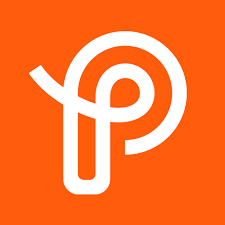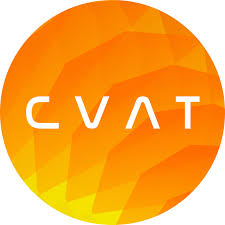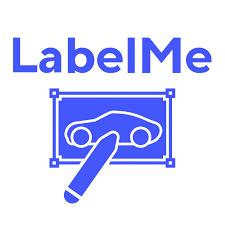Machine learning has come a long way, but even the most advanced models are only as good as the data they’re trained on. One of the biggest challenges in training AI systems is the process of data annotation. Whether it’s labeling images, text, or audio files, accurate and efficient data labeling is essential for building robust AI models. Fortunately, there’s a wide range of annotation tools for machine learning that help streamline this process.
These tools are designed to speed up the annotation process, reduce human error, and improve the overall quality of your labeled data. Whether you’re working on a small-scale project or need to annotate large datasets, these platforms offer flexible solutions to meet your needs. In this article, we’ll take a look at some of the best annotation tools available, highlighting their key features and how they can help you accelerate your machine learning workflow.

1. FlyPix AI
At FlyPix AI, we specialize in transforming geospatial data into actionable insights through artificial intelligence. Our platform helps users detect objects, monitor changes, and identify anomalies within satellite and aerial imagery. This makes it an excellent fit for industries that rely on detailed analysis of Earth’s surface, such as agriculture, urban planning, environmental monitoring, and construction. By combining AI and geospatial analysis, we offer a more efficient and effective way to process and analyze visual data.
We’ve designed a user-friendly, no-code platform that allows you to create and train custom AI models without any coding knowledge. Our tool serves as an ideal annotation tool for machine learning, especially for users who need to work with complex geospatial data. It supports a wide range of data sources, including drone, satellite, hyperspectral, lidar, and Synthetic Aperture Radar (SAR) images, providing a versatile solution for various types of analysis. FlyPix AI also offers different subscription plans to cater to the needs of individuals and large organizations alike, giving flexibility based on the scale of data processing required.
Key Features:
- No code geospatial AI platform for object detection, segmentation, localization, change, and anomaly detection
- Supports satellite, drone, hyperspectral, LiDAR, and SAR image types
- Interactive annotation tools to train custom AI models without coding
- Real-time analytics with dashboards, heatmap generation, vector export, change tracking, and collaboration features
- Enterprise-grade support: API access, multispectral processing, expert-assisted QA, white-label options on higher plans
Best For:
- Teams in agriculture, urban planning, environmental monitoring, and construction
- Users needing an AI-assisted annotation tool for machine learning tasks
- Large organizations and enterprises working with complex geospatial data
- Individuals seeking a no-code platform for custom AI model creation
Services:
- Geospatial object detection and localization
- Change and anomaly detection in imagery
- Dynamic tracking of objects over time
- Custom AI model development for tailored analytics
- Seamless integration with existing GIS systems
- Heatmap generation for visualizing data patterns
Contact and Social Media Information:
- Website: flypix.ai
- Address: Robert-Bosch-Str. 7, 64293 Darmstadt, Germany
- Phone: +49 6151 2776497
- Email: info@flypix.ai
- LinkedIn: www.linkedin.com/company/flypix-ai

2. Prodigy
Prodigy is an annotation tool used for a range of machine learning tasks, such as object detection and image classification. It integrates machine learning models to assist in labeling data, optimizing the annotation process. Prodigy offers flexible workflows, allowing users to adjust it for specific needs. The platform supports both image and text annotation, making it versatile for various types of machine learning projects.
Its ability to combine machine learning with human input helps streamline data labeling while maintaining annotation accuracy. Prodigy supports exporting labeled data, which can be easily used for model training in machine learning systems. It is a practical tool for teams that need an efficient and customizable annotation process.
Key Features:
- Active learning to improve data labeling efficiency
- Customizable workflows for different tasks
- Quality control features to ensure accurate annotation
- Integration with machine learning systems for data export
- Real-time tracking of annotation progress
Best For:
- Image and text annotation tasks
- Customizable annotation workflows
- Teams working with machine learning pipelines
- Efficient large-scale annotation projects
Contact and Social Media Information:
- Website: prodi.gy
- Email: contact@explosion.ai
- LinkedIn: www.linkedin.com/company/explosion-ai

3. Appen
Appen offers a platform that assists in annotating data for machine learning tasks, including image, text, and speech recognition. It uses both human and AI annotation capabilities, ensuring high-quality labels across a variety of data types. Appen’s platform can handle large-scale annotation projects, providing tools to manage progress and track the data labeling process.
Appen supports integration with machine learning workflows, which helps streamline the transition from labeled data to model training. Its flexibility in handling multiple annotation formats and languages makes it a valuable option for enterprises requiring consistent, multilingual annotation support.
Key Features:
- Combination of human and AI-powered annotation
- Support for multiple data types including image, text, and speech
- Scalable platform for large-scale projects
- Integration with machine learning workflows for data export
- Progress tracking tools for project management
Best For:
- Large-scale data annotation projects
- Multi-format data annotation (image, text, speech)
- Enterprises needing multilingual support
- Teams working with machine learning models
Contact and Social Media Information:
- Website: www.appen.com
- Address: 12131 113th Ave, N.E., Suite 100, Kirkland, WA 98034
- Phone: +1 206-800-2101
- LinkedIn: www.linkedin.com/company/appen

4. SuperAnnotate
SuperAnnotate provides an image annotation tool that supports various types of annotations, such as bounding boxes, keypoints, and segmentation. The platform is designed to handle large datasets and allows teams to collaborate in real-time on annotation tasks. It integrates AI-powered tools to assist in speeding up the process and increasing the consistency of annotations.
It also supports seamless data export to machine learning frameworks, making it easy to move from annotated data to model training. SuperAnnotate’s collaboration tools allow multiple team members to work on annotation projects simultaneously, which is beneficial for large-scale datasets.
Key Features:
- Multiple annotation types (bounding boxes, segmentation, keypoints)
- AI-assisted tools to streamline annotation tasks
- Real-time collaboration for team-based projects
- Seamless machine learning workflow integration
- Scalable for large datasets
Best For:
- Computer vision and machine learning annotation tasks
- Real-time collaboration on annotation projects
- Teams working with large datasets
- Projects requiring machine learning workflow integration
Contact and Social Media Information:
- Website: www.superannotate.com
- LinkedIn: www.linkedin.com/company/superannotate
- Twitter: x.com/superannotate
- Facebook: www.facebook.com/superannotate

5. V7
V7 offers tools for annotating images, including support for object detection, segmentation, and keypoint annotation. The platform is designed to handle large-scale data annotation projects, offering both AI-powered tools and manual annotation capabilities. V7 enables teams to speed up their annotation process with AI assistance while maintaining accuracy in labeled data.
The platform allows users to work collaboratively in real-time and provides an easy export system for machine learning frameworks. V7 is suitable for teams working on a variety of computer vision tasks, from object detection to image segmentation.
Key Features:
- Support for object detection, segmentation, and keypoint annotations
- AI-assisted tools to accelerate annotation
- Real-time collaboration features for teams
- Seamless integration with machine learning frameworks
- Scalable for large projects
Best For:
- Teams working on computer vision and machine learning projects
- Projects that require real-time collaboration
- Users needing AI-assisted annotation tools
- Large-scale image annotation tasks
Contact and Social Media Information:
- Website: www.v7labs.com
- Address: 201 Spear Street, Suite 1100, San Francisco, CA 94105
- LinkedIn: www.linkedin.com/company/v7labs
- Twitter: x.com/v7labs

6. CVAT
CVAT (Computer Vision Annotation Tool) is an open-source platform specifically built for annotating images and videos. It supports a variety of annotation types, including object detection, segmentation, and polygon annotation. CVAT is particularly suited for large-scale projects, as it is designed to handle complex datasets efficiently. The platform is flexible and can be adapted to a variety of machine learning tasks.
As an open-source tool, CVAT offers extensive customization options and can be integrated into machine learning workflows. It provides an easy-to-use interface for creating high-quality annotations and ensures that teams can collaborate seamlessly. CVAT is an ideal choice for users looking for a versatile, customizable annotation tool.
Key Features:
- Support for object detection, segmentation, and polygon annotations
- Open-source platform with customization options
- Collaboration features for team-based projects
- Integration with machine learning workflows for data export
- Scalable for large-scale image and video annotation tasks
Best For:
- Teams working with both images and videos
- Large-scale annotation projects
- Users needing a customizable open-source platform
- Projects that require integration with machine learning workflows
Contact and Social Media Information:
- Website: www.cvat.ai
- LinkedIn: www.linkedin.com/company/cvat-ai
- Facebook: www.facebook.com/cvat.corp

7. LabelMe
LabelMe is an open-source annotation tool for images that supports object detection and segmentation. It’s widely used for labeling datasets for machine learning tasks. The platform is designed to be user-friendly and efficient, allowing users to easily label their images using bounding boxes, polygons, or free-hand drawing. LabelMe is often used by teams that require a simple solution for quick data labeling without needing a complex setup.
The platform also supports collaborative annotation, making it a practical option for teams working on shared datasets. With its open-source nature, LabelMe offers flexibility for users who need to modify or extend the tool to suit specific requirements. It’s ideal for users looking for a straightforward, customizable annotation solution.
Key Features:
- Support for object detection and segmentation
- Open-source and customizable
- User-friendly interface for quick labeling tasks
- Collaborative annotation features for team projects
- Ability to extend and modify the tool to meet specific needs
Best For:
- Simple and quick data labeling tasks
- Teams that require collaborative annotation tools
- Users seeking an open-source solution for image labeling
- Small to medium-scale annotation projects
Contact and Social Media Information:

8. Dataloop
Dataloop provides a platform for image annotation that integrates AI tools to speed up the labeling process. It supports a wide range of annotation types, including object detection, segmentation, and classification. Dataloop is designed to help teams manage large datasets while ensuring high-quality labels are produced. The platform supports both manual and AI-assisted annotation tasks, allowing users to label data more efficiently.
Dataloop’s platform also includes tools for managing datasets and project workflows. With its ability to handle large-scale data, it is especially useful for teams working on computer vision tasks that require rapid and accurate labeling. The platform integrates easily with machine learning systems, enabling smooth data flow from annotation to model training.
Key Features:
- Support for object detection, segmentation, and classification
- AI-assisted and manual annotation capabilities
- Dataset and project management tools
- Integration with machine learning systems for data export
- Scalable for large-scale annotation projects
Best For:
- Teams working on computer vision tasks
- Large-scale data annotation projects
- Users needing both AI-assisted and manual annotation tools
- Teams integrating annotation workflows with machine learning systems
Contact and Social Media Information:
- Website: dataloop.ai
- Address: 2 Sapir st, Herzliya, POB 12580, 4685206, Israel
- E‑mail: info@dataloop.ai
- LinkedIn: www.linkedin.com/company/dataloop

9. Encord
Encord is an image annotation platform that supports a variety of annotation types, including object detection, segmentation, and keypoint labeling. It is designed to support teams working on computer vision projects, offering tools for both manual and semi-automated annotation. Encord’s AI-powered tools help speed up the annotation process while maintaining high-quality labeled data.
The platform also includes project management features to help teams organize and track their annotation work. Encord integrates well with machine learning workflows, making it easy to move from data labeling to model training. This tool is useful for teams that need a scalable solution for large-scale annotation tasks.
Key Features:
- Support for object detection, segmentation, and keypoint labeling
- AI-powered tools to speed up the annotation process
- Project management tools to track progress
- Integration with machine learning systems for data export
- Scalable for large datasets
Best For:
- Computer vision projects requiring image annotation
- Teams needing both manual and AI-powered annotation tools
- Large-scale data annotation projects
- Teams working on machine learning models
Contact and Social Media Information:
- Website: encord.com
- LinkedIn: www.linkedin.com/company/encord-team

10. Supervisely
Supervisely is an annotation tool for machine learning that supports a wide range of computer vision tasks, including object detection, segmentation, and classification. It features both manual annotation tools and AI-assisted annotation features to help accelerate the process. Supervisely is scalable and designed to handle large datasets, making it a practical choice for teams working with big data.
The platform offers real-time collaboration features, allowing multiple team members to work on annotation tasks simultaneously. Supervisely also integrates with machine learning workflows, ensuring that labeled data can be quickly used for model training. The platform is suitable for teams that need to manage complex and large-scale image annotation projects.
Key Features:
- Multiple annotation types, including object detection, segmentation, and classification
- AI-assisted annotation tools to improve efficiency
- Real-time collaboration for team projects
- Integration with machine learning systems for seamless data export
- Scalable for large datasets
Best For:
- Teams working on computer vision tasks
- Large-scale annotation projects
- Real-time collaboration for team-based work
- Teams integrating annotation tasks with machine learning models
Contact and Social Media Information:
- Website: supervisely.com
- E‑mail: hello@supervisely.com
- LinkedIn: www.linkedin.com/company/deep-systems
- Twitter: x.com/supervisely_ai

11. Scale AI
Scale AI is an annotation tool for machine learning that offers data labeling services for various applications, including computer vision, natural language processing, and speech recognition. It provides a combination of AI-assisted annotation and human oversight to ensure the data is accurately labeled. Scale AI supports a variety of data types, including images, text, and audio.
The platform is designed for scalability, allowing users to handle large datasets and deliver high-quality labeled data. It also integrates well with machine learning workflows, making it easy to export annotated data for model training. Scale AI is often used for enterprise-level projects where data annotation accuracy and efficiency are crucial.
Key Features:
- AI-assisted and human-annotated data labeling
- Supports images, text, and audio annotation
- Scalable for large data annotation tasks
- Integration with machine learning pipelines for seamless data export
- Progress tracking and project management tools
Best For:
- Large-scale data annotation projects
- Teams working with multiple data types (images, text, audio)
- Enterprises needing scalable and accurate annotation services
- Teams integrating annotation with machine learning workflows
Contact and Social Media Information:
- Website: scale.com
- LinkedIn: www.linkedin.com/company/scaleai
- Twitter: x.com/scale_ai
- Facebook: www.facebook.com/scaleapi

12. Roboflow
Roboflow is an annotation tool that simplifies the process of labeling images for machine learning tasks. It supports various annotation types, including bounding boxes, polygons, and masks for segmentation. Roboflow enables users to annotate images for object detection, classification, and segmentation projects. The platform includes AI-powered tools that assist in speeding up the annotation process by automating some tasks.
In addition to annotation tools, Roboflow offers dataset management features, allowing users to organize and version datasets as they work. The platform integrates with popular machine learning frameworks like TensorFlow and PyTorch, which makes it easy to export labeled data directly for model training. Roboflow also offers both free and paid plans depending on the scale of the dataset.
Key Features:
- Support for bounding boxes, polygons, and segmentation masks
- AI-assisted annotation tools to speed up the process
- Dataset management and version control
- Integration with popular machine learning frameworks like TensorFlow and PyTorch
- Free and paid plans to suit various user needs
Best For:
- Object detection, image classification, and segmentation tasks
- Teams needing AI-assisted annotation tools
- Users working with TensorFlow and PyTorch
- Small to large-scale dataset management and annotation
Contact and Social Media Information:
- Website: roboflow.com
- LinkedIn: www.linkedin.com/company/roboflow-ai
- Twitter: x.com/roboflow

13. Labelbox
Labelbox is a platform that provides tools for image annotation, focusing on improving the speed and accuracy of labeling tasks for machine learning projects. It supports tasks such as object detection, segmentation, and image classification. The platform offers both manual and AI-assisted tools to help users annotate data efficiently.
Labelbox provides a suite of features designed to optimize the annotation workflow, including real-time collaboration, progress tracking, and quality control. It also integrates with machine learning frameworks, allowing users to easily export their labeled data for training models. The platform is scalable and used by teams working on both small and large-scale annotation projects.
Key Features:
- Manual and AI-assisted image annotation tools
- Real-time collaboration for team-based projects
- Progress tracking and quality control features
- Integration with machine learning systems for easy data export
- Scalable for projects of any size
Best For:
- Teams working on object detection and image classification
- Users needing both manual and AI-assisted annotation tools
- Projects that require real-time collaboration
- Teams integrating with machine learning frameworks for model training
Contact and Social Media Information:
- Website: labelbox.com

14. RectLabel
RectLabel is an image annotation tool for machine learning that supports image classification, object detection, and segmentation. It provides a simple interface for annotating images, including tools like bounding boxes, polygons, and keypoints. RectLabel is designed to be user-friendly, allowing quick annotations for various computer vision tasks.
The tool integrates with machine learning models, making it easier for users to export annotated images directly for training. RectLabel is particularly useful for teams working with smaller datasets or those looking for a lightweight, easy-to-use annotation tool. The platform offers both free and paid options, depending on the scale of the annotation project.
Key Features:
- Support for bounding boxes, polygons, and keypoints
- Integration with machine learning frameworks for easy data export
- Lightweight and user-friendly interface
- Free and paid options for different project needs
- Suitable for smaller-scale annotation tasks
Best For:
- Teams working on object detection and segmentation
- Users needing a simple, lightweight annotation tool
- Small to medium-scale machine learning projects
- Teams integrating annotations into machine learning models
Contact and Social Media Information:
- Website: rectlabel.com
Conclusion
The annotation tools mentioned in this article are designed to handle various image annotation tasks, from object detection and segmentation to classification. They offer features such as AI-assisted labeling, real-time collaboration, and integration with machine learning workflows, ensuring that teams can efficiently label data for machine learning projects. Whether you’re working on a small project or a large-scale dataset, these tools provide solutions to meet a range of needs in the field of computer vision and machine learning.
